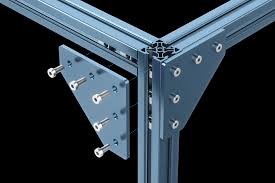Image Source: FreeImages
Introduction to Brick and Mortar Businesses
Brick and mortar businesses have been a staple in our society for as long as trade and commerce have existed. They are the physical stores, restaurants, banks, and other establishments that we visit in our daily life. Despite the surge in online shopping trends, brick and mortar businesses are still an integral part of our communities, providing essential services and products to consumers.
However, with the advent of digital technology and e-commerce, brick and mortar businesses face a unique set of challenges. The competition is not only local but global, with businesses vying for customer attention and loyalty. The traditional ways of doing business are rapidly changing, and businesses must adapt to stay relevant and profitable.
In this context, marketing plays a crucial role in attracting customers and driving sales. It is the backbone of any successful business operation, more so for brick and mortar establishments. It’s not just about putting up a sign and hoping customers will walk in; today’s marketing strategies require creativity, innovation, and a keen understanding of consumer behavior.
Traditional Marketing Tactics for Brick and Mortar Businesses
Traditional marketing tactics for brick and mortar businesses have primarily centred around print advertising, direct mail, television and radio advertisements, and in-store promotions. For decades, these methods have proven effective in reaching out to customers, promoting products and services, and driving sales.
However, as the world becomes more digitally inclined, these traditional methods are no longer enough. While they still have their place in a comprehensive marketing strategy, relying solely on them can result in missed opportunities to engage with customers and grow your business.
Moreover, with consumers increasingly turning to online platforms for information and shopping, brick and mortar businesses must find ways to bridge the gap between the physical and digital world. Effective marketing in the current landscape requires a blend of traditional and innovative strategies that leverage the strengths of both worlds.
The Need for Cutting-Edge Marketing Approaches
The need for cutting-edge marketing approaches in brick and mortar businesses has never been more critical. With the digital revolution and the rise of e-commerce, customer behavior and expectations have significantly changed. Today’s customers are more informed, more connected, and more demanding than ever before.
They expect businesses to provide personalized experiences, seamless transitions between online and offline interactions, and consistent, high-quality service. To meet these expectations, brick and mortar businesses need to embrace innovative marketing strategies that go beyond traditional tactics.
Furthermore, the COVID-19 pandemic has accelerated the shift towards digital, with many consumers opting for online shopping for safety and convenience reasons. As a result, brick and mortar businesses must find ways to remain relevant and appealing to consumers in this new reality.
Innovative Marketing Trends in Retail Store Advertising
One of the most exciting trends in retail store advertising is the use of technology to enhance customer experiences. Virtual and augmented reality, for instance, is being used to create immersive shopping experiences that bridge the gap between the physical and digital world. Customers can virtually try on clothes, see how furniture would look in their home, or tour a restaurant before deciding to eat there.
Another innovative trend is the use of big data and analytics to gain insights into customer behavior. By analyzing data from various sources, businesses can understand what customers want, how they shop, and what influences their buying decisions. This information can be used to personalize marketing messages, tailor product offerings, and optimize store layouts for better customer experiences.
Social media is also a powerful tool for retail store advertising. With platforms like Instagram and Pinterest, businesses can showcase their products in a visually appealing way, engage with customers, and create a sense of community around their brand.
Neon Signs: A Classic Yet Effective Marketing Tool
Neon signs have been a staple in retail store advertising for decades, and for a good reason. They are eye-catching, durable, and can be customized to represent a business’s brand and personality. Despite the advent of digital signage, neon signs still hold their charm and effectiveness in attracting customers.
One of the key advantages of neon signs is their visibility. They can be seen from afar, making them an excellent tool for businesses located in crowded urban areas or busy streets. Additionally, neon signs have a nostalgic appeal, evoking a sense of history and authenticity that can add character to a business.
Furthermore, neon signs are energy-efficient and have a long lifespan, making them a cost-effective marketing tool for small and medium-sized brick and mortar businesses. They are also versatile and can be used in a variety of ways, from storefront signs to interior decor, adding a unique touch to a business’s aesthetic.
LED Signs: The Modern Way of Advertising
While neon signs are a classic, LED signs represent the modern way of advertising. They are brighter, more versatile, and can display dynamic content, making them a popular choice for many brick and mortar businesses.
LED signs offer a wide range of customizable options, from colors and fonts to animations and graphics. They can display real-time information, such as sales and promotions, making them an effective tool for engaging with customers and driving sales.
Additionally, LED signs are energy-efficient and have a long lifespan, making them a sustainable and cost-effective choice for businesses. They are also easy to install and maintain, adding to their appeal.
Comparing the Effectiveness: Neon Signs vs LED Signs
When it comes to effectiveness, both neon signs and LED signs have their strengths. Neon business signs (like these) are known for their brightness and visibility, making them effective in attracting attention and directing customers to a business. They also have a vintage charm that can add character to a business and differentiate it from competitors.
On the other hand, LED signs are versatile and dynamic, allowing businesses to display a variety of content and engage with customers in innovative ways. They are also energy-efficient and durable, making them a cost-effective choice for businesses.
Ultimately, the decision between neon signs and LED signs depends on a business’s needs, budget, and branding strategy. Both types of signage can be effective when used correctly and can complement each other in a comprehensive marketing strategy.
How to Effectively Use Neon and LED Signs for Marketing
Using neon and LED signs effectively for marketing requires a clear understanding of your business’s branding and target audience. A well-designed sign can communicate your brand’s personality, values, and offerings to potential customers, making it a powerful marketing tool.
When designing a sign, consider your brand’s color scheme, logo, and overall aesthetic. A sign should be consistent with your brand identity and stand out from the surrounding environment. It should also be visible from a distance and readable both day and night.
Content is also crucial when using LED signs. Consider what information would be most valuable to your customers – sales and promotions, new product arrivals, or business hours? Keep the content fresh and relevant, and don’t be afraid to get creative with animations and graphics.
Other Cutting-Edge Marketing Approaches for Brick and Mortar Businesses
Beyond neon and LED signs, there are many other cutting-edge marketing approaches for brick and mortar businesses. One such approach is experiential marketing, which focuses on creating memorable experiences for customers. This could be through in-store events, interactive displays, or immersive technology like virtual and augmented reality.
Mobile marketing is another innovative approach, with businesses leveraging smartphones to engage with customers. This could be through mobile apps, SMS marketing, or location-based services that send targeted offers to customers when they are near a store.
Social media marketing is also crucial in today’s digital age. It’s not just about having a presence on social media platforms; businesses need to engage with their audience, share relevant content, and respond to customer feedback.
Conclusion: Choosing the Right Marketing Approach for Your Business
Choosing the right marketing approach for your brick and mortar business depends on your business’s unique needs, goals, and resources. What works for one business might not work for another, so it’s important to experiment with different strategies and measure their effectiveness.
Remember, successful marketing is not just about attracting customers; it’s about building relationships, delivering value, and creating memorable experiences. Whether it’s through neon or LED signs, social media, or experiential marketing, the goal should always be to connect with your customers and make your business stand out.
As you navigate the world of marketing, remember to keep an open mind, embrace innovation, and always strive to understand and meet your customers’ needs. And if you’re ready to take your business signage to the next level, consider Voodoo Neon for high-quality, customizable neon and LED signs.



